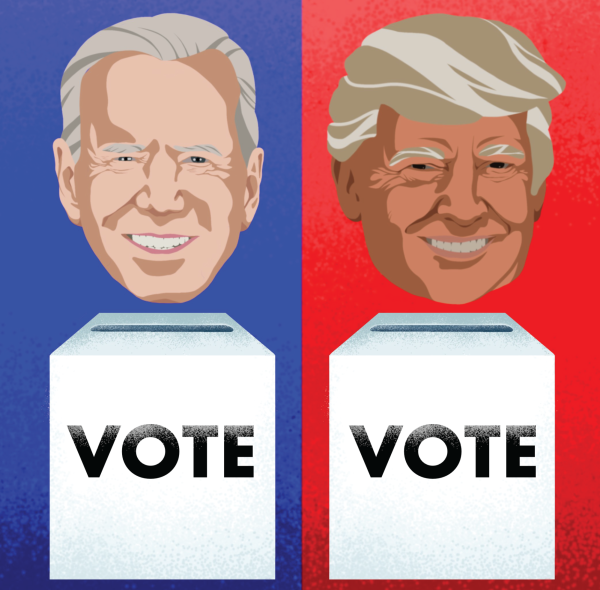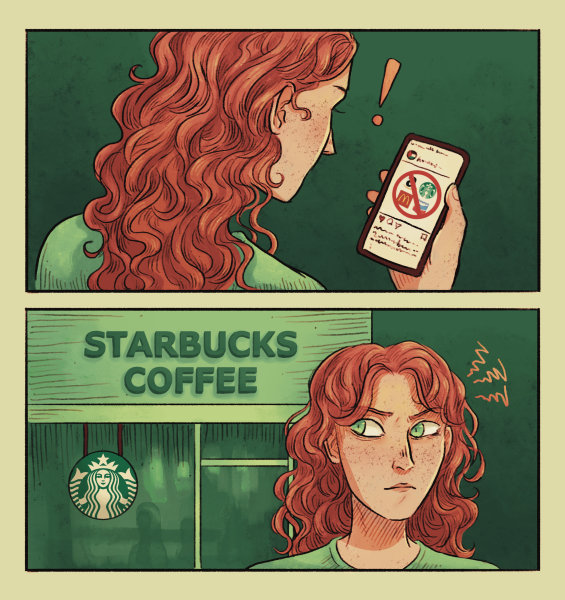Cosmetic industry hides more than flaws
Harmful ingredients in cosmetics often unknown to users
Foundation? Check. Concealer? Check. Eyeliner? Check. These days, the use of cosmetics to alter the appearance of women and some men is very normal — according to the Campaign for Safe Cosmetics, the average American woman uses 12 beauty products a day. Makeup users can clearly see how their cosmetics are altering their exterior but many are unaware of how beauty products affect their interior. This is a question that many may overlook, and the answer is one that big cosmetic brands wish to conceal.
Just how much harm can a beauty product do? First, since the vast majority of cosmetics are applied to skin, it must be taken into account that the skin is not a solid barrier. Skin has pores which allow toxins to be released from the inside out, but conversely allow for anything applied onto the skin to be “consumed”, or absorbed from the outside in. Essentially, applying a product on skin has the same effects as directly ingesting or inhaling that product. Now, this is not necessarily harmful. Just as eating healthy food is beneficial for our bodies, skin absorbing substances such as Vitamin D is beneficial as well. However, the problem is that a large number of ingredients in cosmetics are not beneficial, but detrimental for one’s body.
Most people barely bother to read food labels, let alone the labels on cosmetics. After all, the average person has no idea what the multi-syllable chemical names on the back of the bottle mean anyway. Cosmetic brands take advantage of the fact that consumers generally do not look at or understand ingredient labels before buying products and do not hesitate to use chemicals that may potentially interfere with one’s health.
For example, many soaps and deodorants may contain a chemical known as Triclosan, which, according to the Breast Cancer Fund, is classified as a pesticide and can affect the body’s hormone systems, interfering with metabolism and development.
Many products also contain large amounts of heavy metals such as mercury, arsenic and lead. The Campaign for Safe Cosmetics conducted a study in 2012 which revealed that 61 percent of lipsticks contained detectable amounts of lead. Once again, according to the Breast Cancer Fund, lead is a proven neurotoxin linked to learning, language and behavioral problems and has also been linked to miscarriage, reduced fertility in men and women and delays in puberty onset in girls.
It is surprising to know that cosmetic products have such dangerous ingredients. Cosmetics and neurotoxins are not usually two words which go in the same sentence. After all, one would think that there are policies in place which would stop the usage of such harmful ingredients. This duty would fall under the obligations of the Food and Drug Administration’s (FDA), which is defined on its website as “responsible for protecting the public health by assuring the safety, efficacy and security of human and veterinary drugs, biological products, medical devices, our nation’s food supply, cosmetics and products that emit radiation.”
An easy way to solve the problem of dangerous ingredients in cosmetics would be to simply ban these harmful chemicals and conduct tests to ensure that products do not contain these chemicals before they hit the shelves of drugstores. However, it turns out that the FDA’s control over cosmetics is different from other products it regulates — the FDA really has no control or legal power over the cosmetic industry, even though it is charged with the oversight of cosmetics. According to the FDA website, cosmetic products and ingredients are not subject to FDA premarket approval authority, with the exception of color additives. As a result, according to the Campaign for Safe Cosmetics, 89 percent of all ingredients in cosmetics have not been evaluated for safety by any publicly accountable institution. Even if a certain product or ingredient has been proven to be harmful, the FDA is not authorized to issue a recall. To put this into perspective, there are only 8 ingredients banned in use of cosmetics in the U.S., whereas according to the European Commission of Health and Cosmetics website, over 1,300 ingredients are banned in the use of cosmetics in the European countries, a figurative world of a difference.
The most that the FDA can do is advise that beauty companies use safe ingredients and test their products, as there are no regulations which enforce testing of products or that cosmetic companies share their safety information with the FDA. According to the FDA website, companies and individuals who manufacture or market cosmetics, not the FDA, have a legal responsibility to ensure the safety of their products. In order for this to change, large improvements in legislation would have to occur.
The use of harmful ingredients has been a long standing problem in the U.S., complicated further by the Cosmetic Ingredient Review (CIR). The CIR is the cosmetic industry’s self-policing panel, which should supposedly make up for the lack of control and oversight of the FDA in the industry. However, according to the Campaign for Safe Cosmetics, only 11 percent of ingredients have been tested by the CIR and the CIR does not look into the long-term effects of these chemicals on personal health. Furthermore, compliance with the rules and testing of the CIR are only “voluntary,” another factor in the looseness surrounding regulations in the cosmetic industry. Moreover, because the CIR exists, it is harder to get legislation that pushes for stronger oversight by the FDA over cosmetics off the ground.
Mentioned earlier in this article was the suggestion to read ingredient labels before buying products. However, there are some problems surrounding that as well. Just as regulations are extremely casual regarding the testing and approval of ingredients, so are the regulations which surround the labeling of ingredients and products themselves. This means that labels on products can be misleading and can even exclude ingredients companies do not wish to list. Additionally, there are no legal definitions for the terms “organic,” “all natural,” “environmentally friendly,” “hypoallergenic,” “not tested on animals” and “cruelty free” as applied to cosmetics. This means that companies can plaster these words on their packaging in every which way they so please. Organic products can potentially be full of pesticides and cruelty-free products may not have been tested on animals, but the ingredients themselves may have been. Additionally, any ingredient from nature is considered “all natural”, so a cosmetic with a something like poison ivy could technically be “all natural.” These misleading labels function to manipulate the consumer into thinking that the product he or she is buying is somehow better for him or her, better for others or better for the environment, even if it is not necessarily so.
Reading this article might make beauty consumers scared and clueless about how to protect themselves. While shopping smart might seem like a good idea, what good is it if ingredients are not listed and labels are misleading? The world of makeup is a confusing place for the consumer, but it does not have to be. Joining movements such as the Campaign for Safe Cosmetics or simply spreading the message about this issue is a step in the right direction — a step towards actual responsibility for protecting the public health by assuring the safety, efficacy and security of cosmetics.
Your donation will support the student journalists of Palo Alto High School's newspaper












